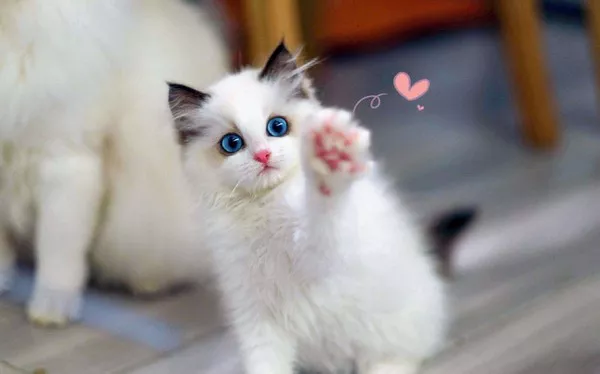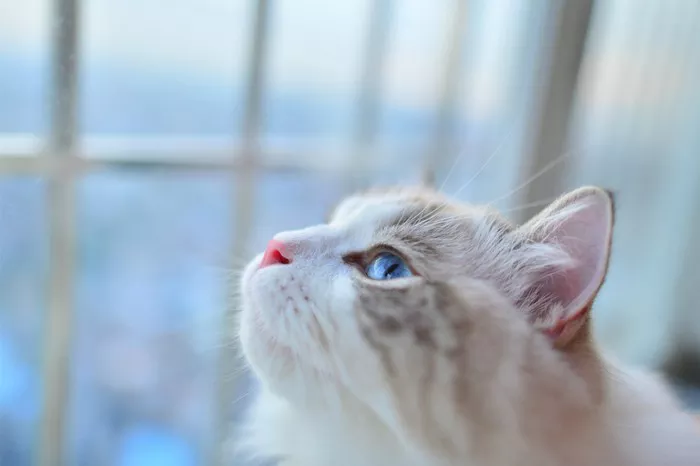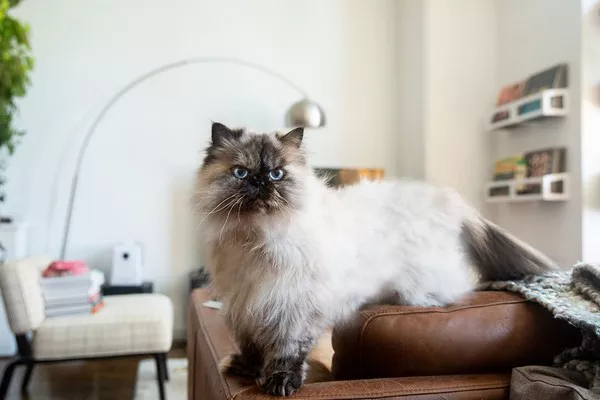Ragdoll cats, with their striking appearance and gentle demeanor, are renowned for forming strong bonds with their human companions. These feline companions, often referred to as “puppy-like” due to their affectionate nature, express their love in unique and subtle ways. In this exploration, we unravel the language of love in Ragdoll cats, delving into the various ways they communicate and demonstrate affection without uttering a single word.
The Affectionate Nature of Ragdoll Cats
Distinctive Characteristics:
Ragdoll cats, known for their stunning blue eyes, semi-longhair coats, and color-point markings, possess distinctive physical features that contribute to their charm. Beyond their appearance, it is their affectionate and sociable nature that sets them apart. Ragdolls are often described as gentle giants due to their docile demeanor.
Breeding for Temperament:
The development of the Ragdoll breed in the 1960s had a specific focus on creating a cat with an amiable temperament. The breeders aimed to produce feline companions that would be not only visually striking but also emotionally connected to their human families. This intentional breeding has resulted in a cat that is predisposed to form strong bonds and express affection.
Non-Verbal Affection
1. Lap Sitting and Cuddling:
One of the most overt ways Ragdoll cats express affection is through lap sitting and cuddling. When a Ragdoll chooses to settle on its owner’s lap, it is a clear indication of trust, comfort, and a desire for physical closeness. Cuddling sessions, whether initiated by the cat or the human, are moments of shared warmth and connection.
2. Kneading Behavior:
Kneading, the rhythmic motion of pushing their paws against a soft surface, is a behavior commonly associated with contentment and affection. Ragdolls may engage in kneading when sitting on their owner’s lap, on a cozy blanket, or even when finding a comfortable spot for a nap. This behavior is a throwback to kittenhood when kneading helped stimulate milk flow during nursing.
3. Head Butting and Rubbing:
Ragdoll cats are known for their gentle head butting and rubbing behaviors. When a cat presses its head or body against its owner, it is a sign of affection and trust. This behavior, known as bunting, is a way for cats to mark their territory and share scent, creating a sense of familiarity and bonding.
4. Purring:
Purring is perhaps the most universally recognized sign of a content and affectionate cat. Ragdoll cats are prolific purrers, and they may purr during various situations, including when being petted, sitting on their owner’s lap, or even when simply relaxed. Purring not only indicates happiness but also serves as a means of self-soothing for cats.
Expressive Eyes and Blinking
1. Eye Contact:
Ragdoll cats are known for their large and expressive blue eyes. Maintaining eye contact with your Ragdoll can be a powerful form of communication. If your cat looks directly into your eyes and blinks slowly, it is a gesture of trust and affection. Returning the slow blink is a way to reciprocate this intimate communication.
2. Slow Blinking:
The slow blink, often referred to as “cat kisses,” is a behavior that signifies relaxation and contentment. When a Ragdoll cat closes its eyes slowly in your presence, it is a display of trust and a signal that they feel secure in your company. Responding with a slow blink of your own strengthens the bond between you and your feline friend.
Vocalizations and Communication
1. Gentle Meows:
While Ragdolls are not known for being excessively vocal, they may use gentle meows to communicate their needs and express affection. Pay attention to the tone and pitch of their meows, as a soft and melodic meow can indicate contentment and a desire for interaction.
2. Purring During Interaction:
Ragdolls may exhibit a unique vocalization pattern, often combining purring with soft chirps or trills. These sounds can be interpreted as a form of communication expressing happiness and a positive emotional state. The combination of purring and gentle vocalizations reinforces the bond between cat and owner.
Playful Interactions
1. Interactive Play Sessions:
Ragdoll cats thrive on interactive play, and engaging in play sessions is a powerful way to strengthen the bond between you and your feline companion. Interactive toys, such as feather wands or laser pointers, can provide opportunities for shared activities and playful interactions that express affection.
2. Fetching and Retrieving:
Some Ragdolls may exhibit playful behaviors typically associated with dogs, such as fetching and retrieving toys. This interactive play style not only provides physical exercise but also reflects the trust and bond your Ragdoll feels, as they involve you in their playtime activities.
Affectionate Behaviors in Different Settings
1. Morning Greetings:
Ragdolls often express affection during morning greetings. Whether it’s by gently waking you up with a soft paw or seeking attention when you first enter a room, these moments reflect their desire for companionship and interaction.
2. Napping Together:
Sharing naptime with your Ragdoll is a special form of bonding. If your cat chooses to curl up beside you or on your lap for a nap, it is a clear indication of trust, comfort, and a desire to be close to their favorite human.
Creating a Bond through Mutual Respect
1. Respecting Individual Boundaries:
While Ragdolls are generally affectionate, it’s essential to respect their individual boundaries. If your cat signals a need for alone time or space, honor their cues and allow them the freedom to choose when to engage in social interactions. Building a bond based on mutual respect enhances the quality of your relationship.
2. Trust-Building Activities:
Engage in trust-building activities to strengthen the bond with your Ragdoll. Grooming sessions, where you gently brush their coat, can be an intimate and bonding experience. This not only helps with coat maintenance but also fosters a sense of trust and well-being.
Recognizing Changes in Behavior
1. Observation for Stressors:
Pay close attention to changes in your Ragdoll cat’s behavior. If they become less affectionate or show signs of stress, consider potential stressors in their environment. Changes in the household, new pets, or disruptions to routines can impact their behavior.
2. Veterinary Consultation:
If you observe significant changes in your Ragdoll cat’s behavior or overall well-being, consult with a veterinarian. Health issues, discomfort, or underlying concerns may contribute to alterations in behavior. A thorough veterinary examination can help identify and address any potential issues.
Conclusion
In conclusion, Ragdoll cats express affection in multifaceted and nuanced ways, ranging from physical closeness and gentle behaviors to vocalizations and playful interactions. Understanding the language of love in Ragdoll cats involves recognizing their unique expressions of affection and responding in kind. The strong bond between a Ragdoll and its owner is built on trust, mutual respect, and the shared language of love that transcends verbal communication. By paying attention to the subtle cues and behaviors of your Ragdoll cat, you can deepen the connection and enjoy the rich rewards of feline companionship.


























